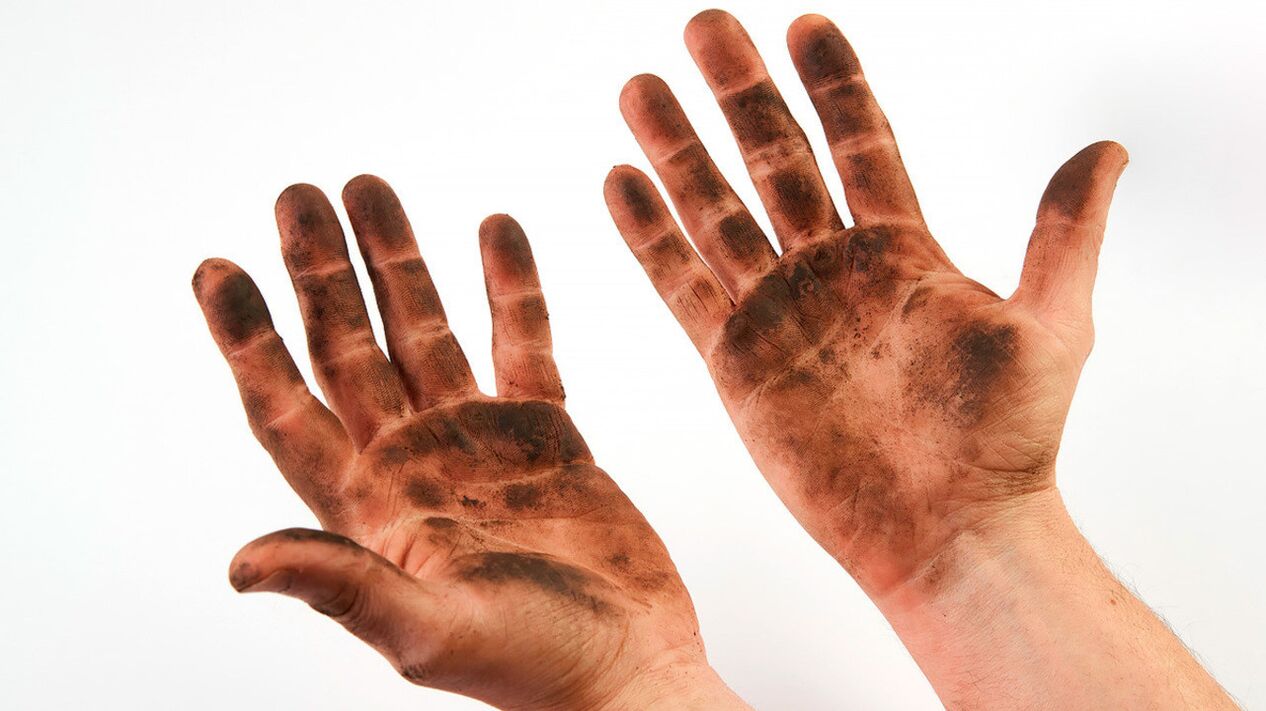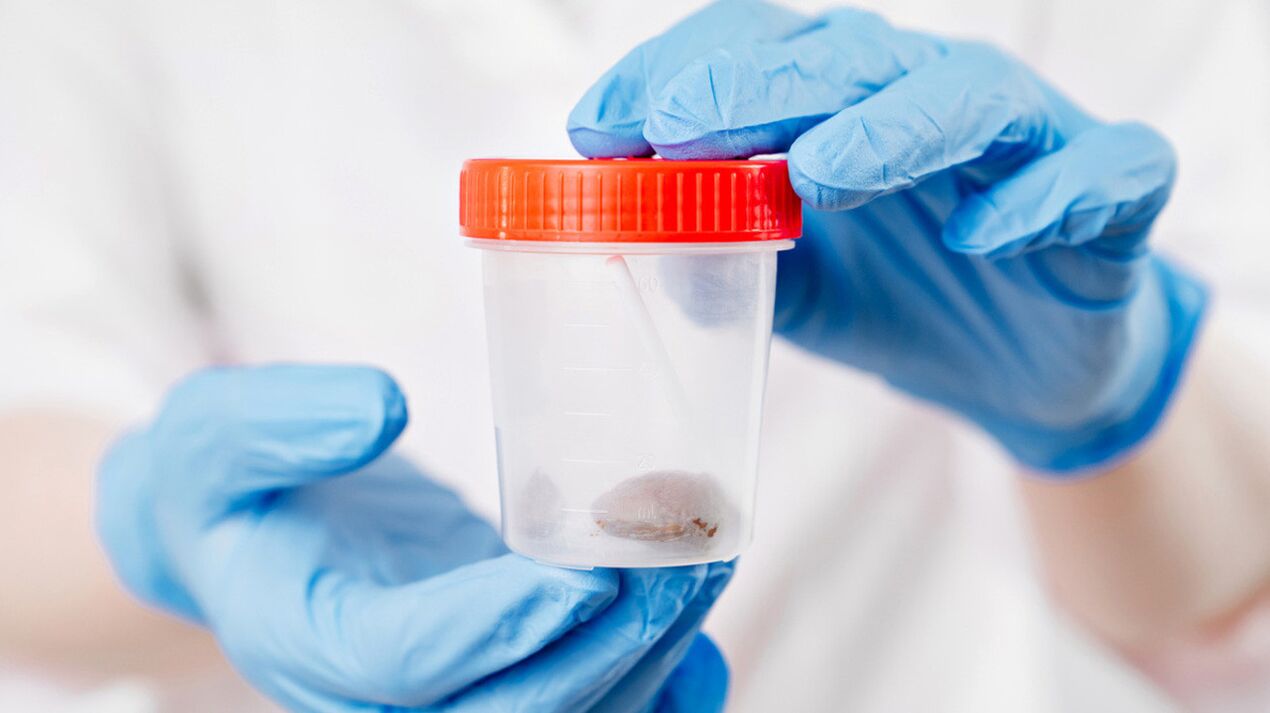%20in%20the%20doctor's%20hand.jpg)
Worms are parasitic worms that live in humans and animals. They are difficult to detect because they masquerade as many other diseases and conditions. Symptoms of helminth infection range from mild discomfort to fainting during severe poisoning. We will tell you where you can get worms and how to get rid of them.
What is it
Worms are considered the most common parasite in humans. Today science knows about 300 worm diseases. The most common are intestinal worms - intestinal worms and ascariasis, which affect more than 2 billion people.
The size of the worms that live in the body varies from a few millimeters to several meters. For example, the length of the pinworm that causes filariasis does not exceed 1 cm, some species of tapeworms (for example, wide tapeworms) can reach 12-15 meters.
Causes of helminthiasis
Heartworm disease is a worm infection. Worms enter the human body and stay there. These parasites live not only in the intestines, but also in other organs and tissues.
According to the World Health Organization, one in four people on Earth is infected with worms. At the same time, WHO experts note that the real number of infected people is at least 50%. This is mainly related to countries with low hygiene culture (these are some countries in Africa and Southeast Asia). In other countries, more than 1. 5 million cases of helminth infections are recorded annually. Most of them are children.
How can you get worms?
There are four ways of infection:
- Through the land. Such diseases are called helminthic diseases. Unwashed fruit can contain tens of thousands of parasites. Therefore, it is important to thoroughly wash vegetables, fruits and hands before eating. Pet walking is another source of terrestrial parasites.
- In contact with an infected person. Parasite worms are extremely prolific. In just one day, the female pinworm is capable of laying up to 5, 000 eggs in the human body. Eggs and mature eggs can be passed to others through bedding and other household items. Then, as long as the infected person does not wash their hands, the worms will get inside.
- When eating contaminated food. Such helminthic diseases are called biological helminths. You can become infected with parasites when handling meat, poultry or fish with insufficient heat.
- Through insect bites. This type of transmission is very rare. As a rule, very small parasites can be transmitted through the bite of an insect.
Consider the risk factors that increase the likelihood of worm infections in adults and children:
- Ignore the rules of hygiene - if you don't wash your hands after going out, going to the toilet or before eating.
- Habit of biting nails - underneath there is a lot of dirt along with bacteria and parasites. This also includes the habit of putting pens, pencils, and other objects in the mouth.
- Poor pet care, especially for those who go out.
- Eat unwashed vegetables and fruits.
- Use water from questionable sources.
- Poor sanitation.
- Passionate about proper culinary unprocessed animal food.
Who is at risk?

No one is immune to worm infections. It is enough to give hygiene problems, and the larvae of the parasite can "break through" into the body. The following people are particularly susceptible to helminth infections:
- Children. Most often, helminthic invasions are noted in children. This is due to the fact that the child neglects the rules of hygiene. Young children put objects in their mouths, on the way they often dig in the mud. According to the group, children tend to be in closer contact with each other than adults, which also increases the likelihood of infection.
- Families with pets. Eggs and larvae of the parasite, from the street into the area living with pets, can be everywhere. Often, owners of dogs, cats, and other animals aren't even aware of the problem and discover the presence of worms when contacting a veterinarian for another reason.
- Gourmet. People who love exotic foods such as sushi, raw meat or fish are also at risk.
- Traveler. This is especially true for people traveling to countries with low levels of hygiene.
- Summer residents, agricultural workers. People who work in vegetable gardens, orchards or simply live in the countryside.
- People who come across raw fish or meat in their work. For example, a supplier or a chef - when preparing, cutting and preparing food.
Myth 1: Marine fish do not have parasites.
Many people mistakenly believe that worms are only found in river fish, not in the sea because of salt water. Indeed, marine fish are mainly affected by parasites that are not dangerous to humans. In this respect, live river fish are more dangerous than live sea fish. But this does not mean that sea fish is completely safe: it is always advisable to prepare any fish - thoroughly fry, boil or freeze for 3 days.
Classification of helminthic diseases
There are several ways to classify parasitic worms. According to localization, the worm is:
- Intestinal - lives in the small intestine or large intestine. These include roundworms, eels, whipworms, tapeworms, and others.
- Lungs - live in the tissues of the bronchopulmonary system. Usually it's lung fluke.
- Tissue - parasitic on various tissues of the body. Tissue worms include schistosomes, trichinella and toxocars.
- Parasites of the liver and gallbladder. These are the liver fluke, the large liver fluke and the lung fluke (the liver fluke).
There are 4 types of helminthiasis, depending on the causative agent:
- Nematodes - caused by roundworms. These are roundworm disease, filariasis, helminthiasis, gnathostomiasis, ascariasis, strongyloidiasis and others.
- Cestodoses - the causative agent of which is a tapeworm. Such conditions include dilatation of sweat, dilation of the nail head, dilation of the tendon sheath, diphyllobothriasis and cystcerciasis.
- Dystomyases are diseases caused by flatworms. That is small liver fluke disease, large liver fluke disease, filariasis.
- Protozoses - pathogens are protozoa, such as lamblia, toxoplasma or amoeba.
More than 70 species of parasitic worms are distributed. The most common are the following helminthic diseases (see table).
| Sick | Pathogen and its characteristics | Transfer method |
|---|---|---|
| Roundworm disease | Called roundworm. These are roundworms that live in the intestines. They can grow up to 30-40 cm tall, roundworms eat most of their nutrients from food. During the vital activity, the worm damages the intestinal wall to the perforation | Usually, roundworm eggs are transmitted by the fecal-oral route. They last a long time in the soil and on the surface of vegetables, fruits, herbs and berries |
| Enterobiasis | It develops when pinworms enter the body. These are small roundworms, 0. 5-1 cm in size, the main danger in intestinal worm disease is the toxic waste products of the worms. | Contact with an infected person. Pinworm eggs remain on various surfaces for some time. |
| Giardiasis | Caused by a microscopic parasite - lamblia. Pathogens produce toxic substances and damage tissues | Giardia is spread by the fecal-oral route, as well as through contaminated food and water |
| Opisthorchiasis | The causative agent is small worms up to 2 cm in size, they usually parasitize the liver and biliary tract. With opisthorchiasis, poisoning with toxic substances and mechanical damage to tissues occurs | Opisthorchiasis is transmitted through raw fish |
| Echinococcosis | Diseases caused by echinococci - tapeworms, the size of which does not exceed 5 cm. Echinococci parasitize various tissues, including the heart and brain. Pathogens cause serious disturbances in the functioning of organs and body systems. In some cases, they can stimulate malignancy. | They are spread through dirty hands and contaminated food. Carriers of Echinococcus bacteria can also be dogs and rodents. |
| Diphyllobothriasis | The causative agent - large tapeworm, reaching 10-15 meters. Tapeworms live in the small intestine and cause severe damage to the host's body. Worms produce toxic substances and significantly impair the function of the digestive tract | Transmission by eating raw fish |
| Hemorrhoids | Called flagellate, a type of roundworm, which looks like a hair. Vlasoglava can reach 5-6 meters. Worms live in the intestines, penetrating the submucosa. Causes toxicity, inflammation and acute anemia | The invasion is carried out by swallowing the eggs of the parasite |
Worm infestations are also classified by stages:
- Acute helminthic infections - appear 2-4 weeks after infection. In this case, the symptoms of worms are observed from 1 week to several months. If you do not take therapy, the disease will become chronic.
- Chronic helminthiasis - manifestation depends on the type of parasite. For example, if these are parasites with larval reproduction, then prolonged allergic reactions will occur. Other chronic worms may be asymptomatic or accompanied by pain, discomfort, fatigue, and other symptoms.
Complications of helminthiasis
If filariasis is left untreated, this can lead to serious, sometimes life-threatening complications:
- Anemia - anemia, insufficient number of red blood cells and hemoglobin in the blood. This condition is caused by the worms consuming part of the nutrients needed for normal hematopoietic function.
- Destroys tissues and organs. Worms not only live in the lumen of the digestive tract, but also in the thickness of tissues, such as liver, lungs, muscles. Mostly, tissues are affected during the migration of the worms, as they move from one part (or organ) to another - ulcers and foci of inflammation are constantly formed. In this context, the risk of developing infections and malignancies increases.
- Diseases of the nervous system. It is because the toxic waste products of the worms poison the body. Nervous tissues are most sensitive to toxins. This can lead to irritability, headaches, insomnia, and other signs of nervous system damage.
- Allergic reaction. The toxins secreted by the worms can also act as allergens. Human immunity may respond inadequately to these substances. This leads to the appearance of typical allergy symptoms - rash, skin redness, itching and sometimes nausea and vomiting.

The presence of worms in the body also leads to a lack of the following minerals:
- Zinc. With a lack of zinc, immunity decreases, a person often gets colds and other infectious diseases. The likelihood of prostatitis and infertility is increased, as this trace element is extremely important for the health of the reproductive system.
- Selenium. Lowers immunity and also increases the risk of malignancies.
- Iodine. Iodine deficiency in children will lead to stunted growth and development (physical and mental). In adults, the work of the thyroid gland decreases, metabolism slows down.
- Manganese. With a lack of manganese, bones become brittle. A person who loses weight quickly, he is often troubled by cramps and inflammation of the skin.
- Chromium. Deficiency of this element leads to growth retardation and impaired carbohydrate metabolism.
Worms and immunity
Often, worms are accompanied by other parasites - toxoplasma and chlamydia. This is due to the suppression of immunity. A healthy body can fight off invaders, but with helminthiasis, the defenses are weakened. Toxoplasmosis is especially dangerous during pregnancy, as it can lead to fetal death.
Symptoms of helminthiasis
Signs of worm disease are diverse in both adults and children. The most common symptoms are:
- itching in the anus is the most common symptom of intestinal worms;
- grinding teeth in a dream - occurs due to toxins secreted by worms;
- drooling while sleeping and in the morning;
- nausea when brushing teeth in the morning;
- peeling skin of hands and feet;
- allergic skin rash;
- a strong feeling of hunger, up to fainting;
- swelling (often allergic);
- itchy skin;
- chronic fatigue;
- headache and dizziness;
- mental disorders of unknown reason (stress, neurosis, depression);
- distention;
- symptoms of intestinal disorders;
- changes in body weight (both overweight and underweight);
- simultaneous course of several diseases (or the succession of one disease to another);
- cramping or pulling pain in the abdomen;
- anemia;
- physical and mental retardation in children;
- children are hyperactive or lethargic;
- lymphadenopathy (usually in the acute phase of helminthiasis).
When to see a doctor?
A therapist or infectious disease specialist deals with the treatment of parasitic diseases. You should consult your doctor if you notice one or more of the above symptoms. Since there is a rather complicated system of worms, you should explain your symptoms to your doctor as accurately as possible, and at the same time talk about your lifestyle: what do you like to eat, have you traveled recentlyand where, are there pets, etc. v.
Diagnostic

If the doctor suspects a helminthic infestation, it is not difficult to identify it. For this, the following diagnostic procedures are used:
- Fecal examination. A stool sample is handed over to the laboratory. They may contain eggs or larvae of parasites that live in the intestines.
- Check for filariasis. A cotton swab is taken from the anus. With this analysis, pinworms can be identified. Scaling should be done early in the morning, before going to the toilet.
- Blood tests to look for antibodies. This is a pretty informative test with which you can identify many types of parasites. However, even with a positive result, there is no 100% guarantee that the parasites remain in the patient's body, as the antibodies remain even after they are eliminated.
- Diagnostic tool. The use of X-rays, MRI and CT with the use of contrast agents. These diagnostic methods help to identify both large worms and some pathological changes in tissues due to helminth infestation.
As a rule, the doctor prescribes different studies to increase the reliability of the data obtained. Sometimes a patient has to have multiple tests to get an accurate diagnosis.
Important!When helminth infection is confirmed, it is necessary to inform other close family members about this. An examination is also recommended for them. If the test is positive, it is important that all infected household members be treated. Otherwise, the eggs of the parasites will again enter the body of the recovered person, and everything will have to be redone.
Treatment of helminths in children and adults
Although there are many antiparasitic drugs in pharmacies, you cannot take them on your own. Prescribing a comprehensive treatment, the doctor seeks not only to get rid of the parasites, but also to eliminate the consequences of their vital activity.
As a rule, in addition to dewormers, patients are prescribed vitamins and other drugs to eliminate the symptoms of the disease. Doctors choose medications individually for each patient, because each person's symptoms are different.
Medicines to treat helminths
With helminthic invasions, the patient is prescribed a complex of the following drugs:
- Dewormer. These are deworming drugs that work to get rid of or kill the worms. These goals are achieved by disrupting the metabolism of the parasites or by paralyzing their muscles. In the latter case, they lose their ability to stay in the intestines and are eliminated.
- Antihistamines. If the patient is allergic to the parasite, then at the time of treatment, the doctor will prescribe an anti-allergic drug. This is extremely important, because with the mass death of worms, a large number of allergens are released, which can cause a strong allergic reaction. Antihistamines block the production of histamine, the main mediator of allergic reactions.
- Absorbents. These are drugs that have the ability to bind substances in the digestive tract. During the treatment of worms, adsorbents are used to bind and remove toxic substances secreted by the worms.
- Vitamins and minerals. Usually, B vitamins (folic acid and B12) and iron preparations are prescribed. This is necessary to treat anemia.
- Hepatoprotective drugs. These are drugs that work to protect the liver from harmful substances. These include preparations based on essential phospholipids or plant materials (milk thistle, artichoke, licorice, St. John's seaweed and others).
- Probiotics and prebiotics. Prescribed to restore intestinal microflora. Probiotics are live cultures of beneficial bacteria. Prebiotics are indigestible food ingredients (such as fiber) that are only fermented by the gut bacteria.
Surgery
In most cases, a single dose of the complex is sufficient. However, sometimes doctors still have to resort to surgery. For example, a large accumulation of roundworms can cause intestinal obstruction. This is an emergency that requires surgery.
Worms can accumulate in the bile ducts, causing obstructive jaundice and even liver abscesses. A similar condition can occur in the pancreas, leading to acute pancreatitis. If the worms get into the appendix, appendicitis develops. All of these conditions require prompt surgery.
Usually, surgery is used when organs are damaged by echinococcus bacteria. These parasites accumulate, forming foci of gonococcal infections in the liver, lungs, bones, kidneys, and even the brain. The danger of such a plug is that it can fester and burst.
Folk remedies for worms
Folk remedies for worms are not as effective as dewormers. This is only an auxiliary method - the main treatment prescribed by a doctor.
Folk remedies include pumpkin seeds, which contain cucurbitin, a substance that acts as an anthelmintic.
Myth 2: Garlic enema repels worms
Worms really don't like garlic, because it contains phytoncides - antibacterial and anti-parasitic substances. However, it is not necessary to do the garlic deworming procedure. In the large intestine, where the substance of the enema is stored, there are very few worms. Most of the parasites live in the small intestine, so this procedure is useless. In addition, from such an enema, you can experience severe irritation to the mucous membranes.
Prevention and precaution

In most cases, the prognosis for helminthiasis treatment is favorable. Timely visits to the doctor will avoid some of the complications that filariasis leads to.
The prevention of worms is reduced when the following recommendations are observed:
- Wash your hands with soap and water before eating, after returning home, going to the bathroom, or after coming into contact with animals.
- Thoroughly wash vegetables, fruits and herbs. It is better to pour boiling water over them.
- Do not use other people's toiletries and other people's dishes.
- Give up bad habits (smoking, alcohol).
- Avoid stress, it will have a beneficial effect on immunity.
- Regularly take your pet to the veterinarian, timely vaccination.
- Every year, a comprehensive preventive examination must be performed, including tests for worm eggs.
- Cook meat, poultry, fish and eggs appropriately.
Myth 3: Parasites die in frozen meat.
This is only true for certain species of worms. For example, beef tapeworms actually die when meat is deep frozen (minus 12 or less). And, for example, Trichinella larvae can be discarded after only 2-3 hours of cooking.
Conclusion
The main cause of helminth infestations is inadequate hygiene. Improved sanitation and proper cooking of animal foods greatly reduce the likelihood of helminth infections. In most cases, worms do not pose a danger to human health if detected in time. However, the lack of treatment leads to serious consequences - anemia, nervous system damage and other infections.






































